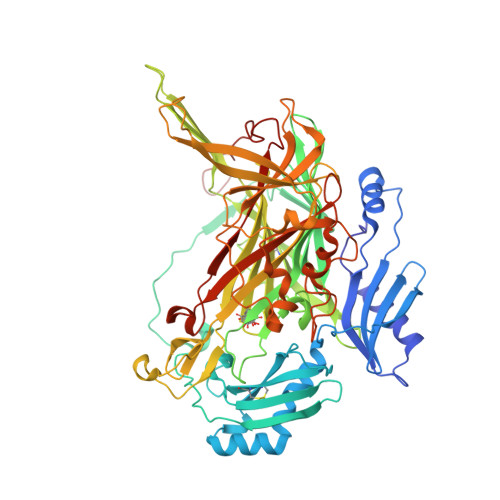Using Xenon as a Probe for Dioxygen-Binding Sites in Copper Amine Oxidases.
Duff, A.P., Trambaiolo, D.M., Cohen, A.E., Ellis, P.J., Juda, G.A., Shepard, E.M., Langley, D.B., Dooley, D.M., Freeman, H.C., Guss, J.M.(2004) J Mol Biol 344: 599
- PubMed: 15533431
- DOI: https://doi.org/10.1016/j.jmb.2004.09.075
- Primary Citation of Related Structures:
1RJO, 1RKY, 1W2Z - PubMed Abstract:
Potential dioxygen-binding sites in three Cu amine oxidases have been investigated by recording X-ray diffraction data at 1.7-2.2A resolution for crystals under a high pressure of xenon gas. Electron-density difference maps and crystallographic refinement provide unequivocal evidence for a number of Xe-binding sites in each enzyme. Only one of these sites is present in all three Cu amine oxidases studied. Structural changes elsewhere in the protein molecules are insignificant. The results illustrate the use of xenon as a probe for cavities, in which a protein may accommodate a dioxygen molecule. The finding of a potential dioxygen-binding cavity close to the active site of Cu amine oxidases may be relevant to the function of the enzymes, since the formation of a transient protein-dioxygen complex is a likely step in the catalytic mechanism. No evidence was found for xenon binding in a region of the molecule that was previously identified in two other Cu amine oxidases as a potential transient dioxygen-binding site.
Organizational Affiliation:
School of Molecular and Microbial Biosciences, University of Sydney, NSW 2006, Australia.




















